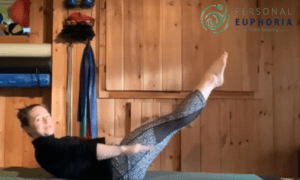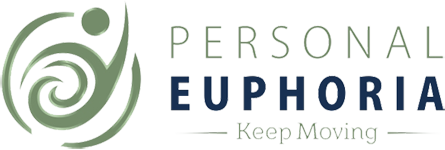 Why do we do the 100 in Pilates? It’s a fair question. In fact, it’s always fair to ask, “why do I have to do this exercise.” I tell my clients that if I don’t have the answer for them they don’t have to do it. It’s important for all of us to know and understand why we do any move in a class. Understanding helps us get more out of it. So why the 100? Here’s why:
Why do we do the 100 in Pilates? It’s a fair question. In fact, it’s always fair to ask, “why do I have to do this exercise.” I tell my clients that if I don’t have the answer for them they don’t have to do it. It’s important for all of us to know and understand why we do any move in a class. Understanding helps us get more out of it. So why the 100? Here’s why:
Abdominal Endurance:
The 100 is hard to do well (like most Pilates exercises). One hundred seconds is a LONG time to have your head up off the ground. Really, it’s a big ask. Keeping the head in the air and the legs lifted means your abs are working doubly hard throughout the whole exercise.
Breathing While Doing the 100:
You may find you hold your breath while doing the 100. It’s common to hold our breath on any movement, especially challenging moves, but while all Pilates exercises work to sync breath and movement, the 100 breaks the breath down pretty simply. You inhale for 5, exhale for 5 while not doing too much else. Sure, you’re working hard, but other than the arms pumping, the traditional exercise is just a hold. (JUST a hold—HA…it’s a tough hold, don’t get me wrong). If you struggle to inhale and exhale for a 5 count while working, you can do a staccato breath—five quick little inhales and five quick little exhales.
Stability:
Ever hear an instructor mention not to bob you head up and down on the 100? It’s actually quite common for people new to Pilates to pulse the head up and down as their arms move. Sometimes that is just a matter of not realizing what is supposed to be moving in the exercise, but other times it’s an opportunity to learn how to keep the trunk stable (and still) while the limbs move (and move vigorously). If that isn’t something you’ve had to work through, you may be taking for granted that in addition to holding you up at both ends your abs are also keeping your spine stable as your arms pump. You are learning to move your arms independently—not making the rest of the body pulse with them.
Lots of Options:
The 100 can be modified to make is simpler as we build up to the full version or we can add moves to it to create different types of challenges. For example you can keep your feet on the floor (gentler version), scissor the legs (adding more coordination), or bend and straighten the legs (a nice progressive option). All these variations create options for growth and learning more about our body during particular moves. They can help us break it down and use it as a tool to build strength for other exercises.
Warm Up:
The 100 literally heats you up. The vigorous pumping is meant to get the blood flowing and warm the body. Between the breath and the flowing blood hopefully more oxygen is getting to all our muscles. Traditionally Pilates classes had a lot more bouncing, but much of that has disappeared over time. The 100 is one of the hold outs. I challenge you to try this move now and I suspect you will notice you are warmer afterward. It’s a great choice in the dead of winter.
Remember, as you build to the 100 you can modify. Head down. Feet down. You can even start with a 20, build to a 50 and work your way up to 100. It’s never all or nothing.
Looking for a variation to try now? You’ll find the PE team all doing a different version in this video. But if you go to our YouTube Page (EuphoriaPilates), search the 100 and you’ll find 100 different options.
Keep Reading:
Here are more tips for good quality ab work.
Need help with the full roll up? Check out this blog/videos.
Does your neck hurt when you do ab exercises? This could help.
Keep Connected
Order Your Copy of Keep Moving Today!
Subscribe to the Keep Moving Blog
Like the Personal Euphoria Facebook page
Find us on Twitter
Follow me on Instagram
Subscribe to my YouTube Channel
